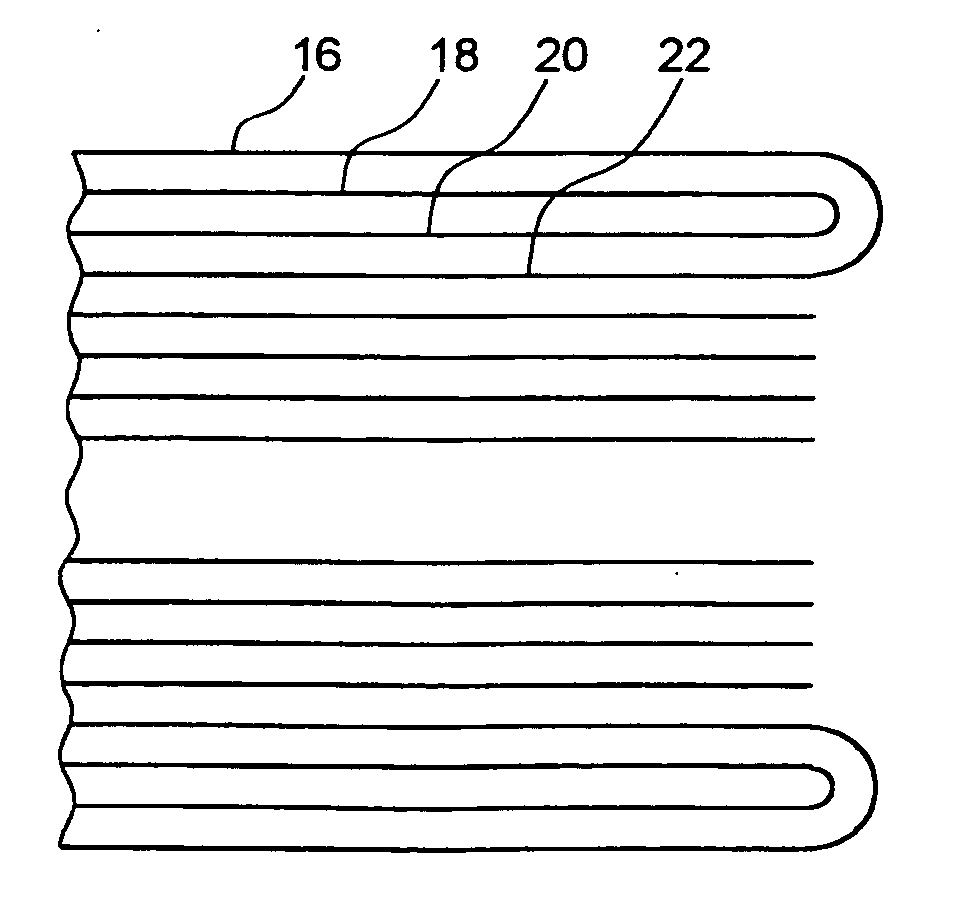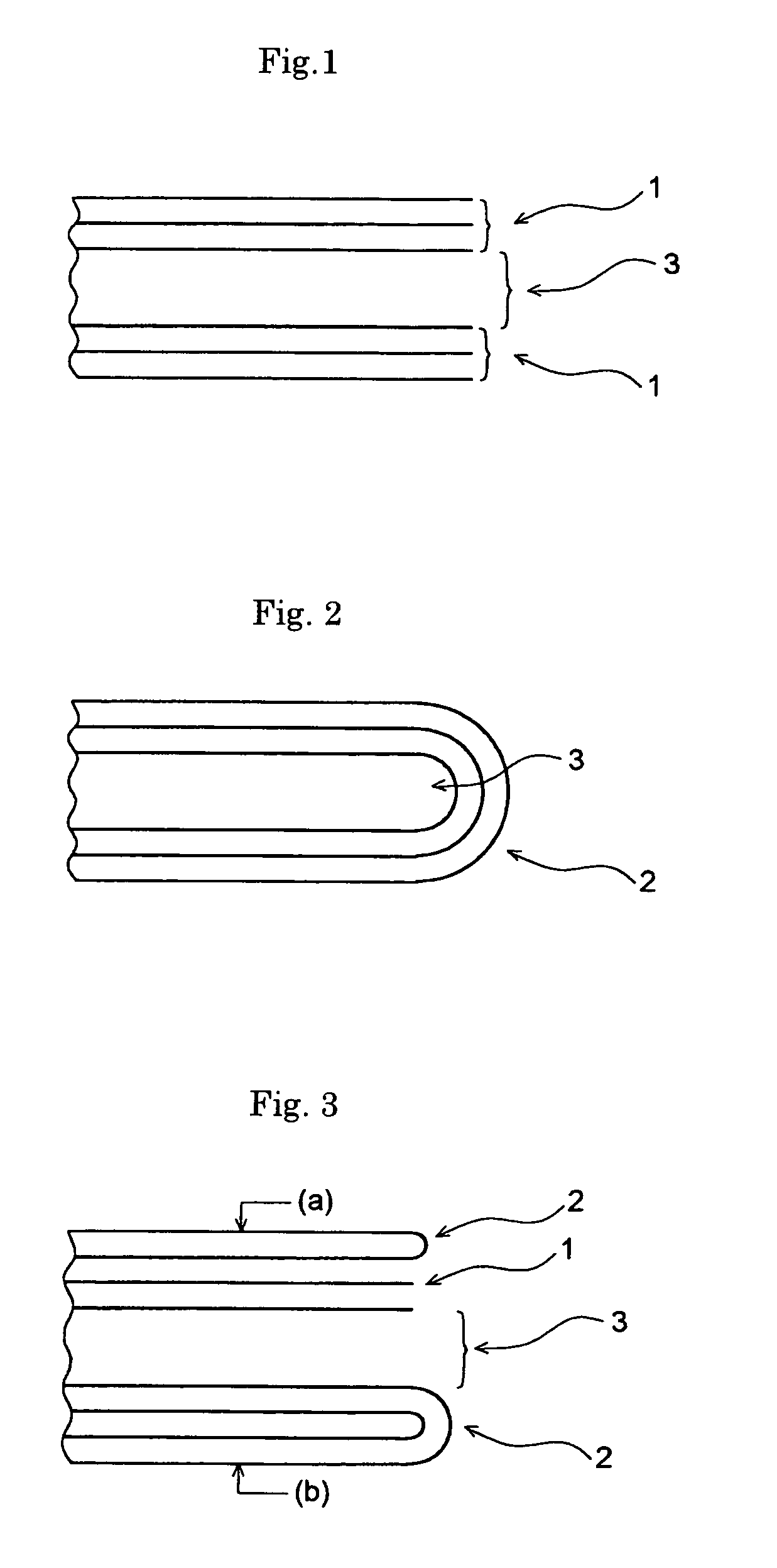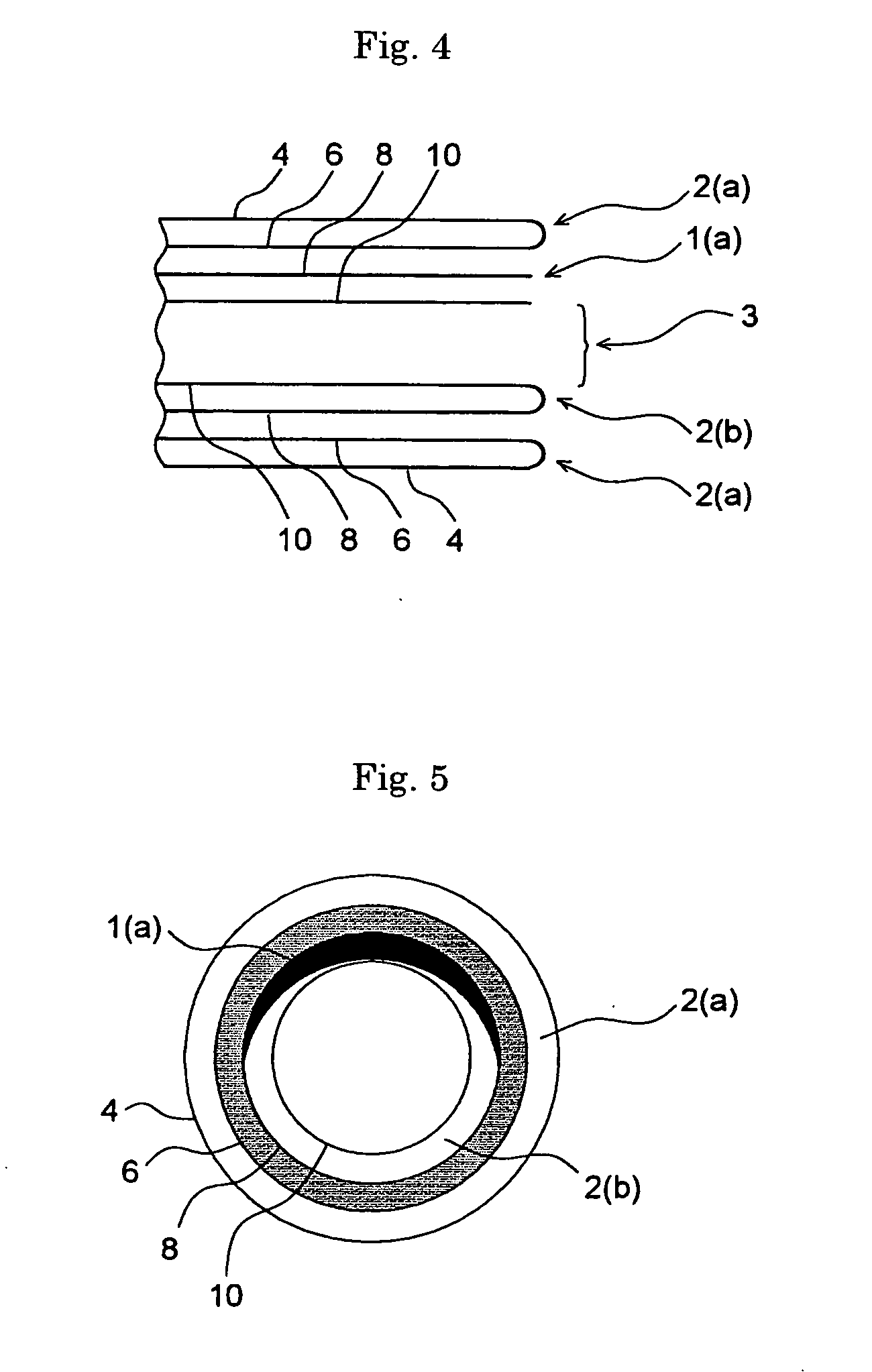Catalyst-supported body and fuel cell using the same
a fuel cell and catalyst technology, applied in the field of catalyst carriers, can solve the problems of large resistance and insufficient gas permeability, and achieve the effects of enhancing the activity per unit amount of catalyst metals, reducing reaction resistance, and enhancing output density
- Summary
- Abstract
- Description
- Claims
- Application Information
AI Technical Summary
Benefits of technology
Problems solved by technology
Method used
Image
Examples
example 1
[0081] 5 g of vapor-grown carbon fiber having an average outer diameter of 150 nm, a specific surface area of 13 m2 / g and an average fiber length of 10 μm was loaded in a rotary crusher (stainless steel-made crushing blade, rotation rate: 25000 rpm) and subjected to a crushing treatment for 10 minutes. Thereafter, a specific surface area and an average fiber length of the carbon fiber were measured and, as a result, the specific surface area and the average fiber length were 18 m2 / g and 7.5 μm, respectively, which were 1.6 times and 0.75 times the original values, respectively. 0.2 g of the thus-crushed vapor-grown carbon fiber was dispersed in 50 ml of distilled water, 0.172 g of sodium carbonate was added and then, stirred with heat at 80° C. To the resultant dispersion, an aqueous solution containing 0.135 g of chloroplatinic acid was added dropwise, stirred for two hours and, then, a 35% aqueous solution of formaldehyde was added dropwise. After stirred for one hour, the resulta...
example 2
[0083] 5 g of vapor-grown carbon fiber having an average outer diameter of 150 nm, a specific surface area of 13 m2 / g and an average fiber length of 10 μm was loaded in a rotary crusher (stainless steel-made crushing blade, rotation rate: 25000 rpm) and subjected to a crushing treatment for 20 minutes. Thereafter, a specific surface area and an average fiber length of the carbon fiber were measured and, as a result, the specific surface area and the average fiber length were 24 m2 / g and 6.0 μm, respectively, which were 1.8 times and 0.6 times the original values, respectively. 0.2 g of the thus-crushed vapor-grown carbon fiber was dispersed in 50 ml of distilled water, 0.172 g of sodium carbonate was added and then, stirred with heat at 80° C. To the resultant dispersion, an aqueous solution containing 0.135 g of chloroplatinic acid was added dropwise, stirred for two hours and then, a 35% aqueous solution of formaldehyde was added dropwise. After stirred for one hour, the resultant...
example 3
[0085] 5 g of vapor-grown carbon fiber having an average outer diameter of 150 nm, a specific surface area of 13 m2 / g and an average fiber length of 10 μm was loaded in a rotary crusher (stainless steel-made crushing blade, rotation rate: 25000 rpm) and subjected to a crushing treatment for 10 minutes. Thereafter, a specific surface area and an average fiber length of the carbon fiber were measured and, as a result, the specific surface area and the average fiber length were 18 m2 / g and 7.5 μm, respectively, which were 1.6 times and 0.75 times the original values, respectively. 0.2 g of the thus-crushed vapor-grown carbon fiber was, after being heated in a 60% aqueous solution of nitric acid for five hours at 70° C., dispersed in 50 ml of distilled water, 0.172 g of sodium carbonate was added and the dispersion was stirred with heat at 80° C. To the resultant dispersion an aqueous solution containing 0.135 g of chloroplatinic acid was added dropwise, stirred for two hours and then, ...
PUM
| Property | Measurement | Unit |
|---|---|---|
| BET specific surface area | aaaaa | aaaaa |
| outer diameter | aaaaa | aaaaa |
| temperature | aaaaa | aaaaa |
Abstract
Description
Claims
Application Information
 Login to View More
Login to View More - R&D
- Intellectual Property
- Life Sciences
- Materials
- Tech Scout
- Unparalleled Data Quality
- Higher Quality Content
- 60% Fewer Hallucinations
Browse by: Latest US Patents, China's latest patents, Technical Efficacy Thesaurus, Application Domain, Technology Topic, Popular Technical Reports.
© 2025 PatSnap. All rights reserved.Legal|Privacy policy|Modern Slavery Act Transparency Statement|Sitemap|About US| Contact US: help@patsnap.com



